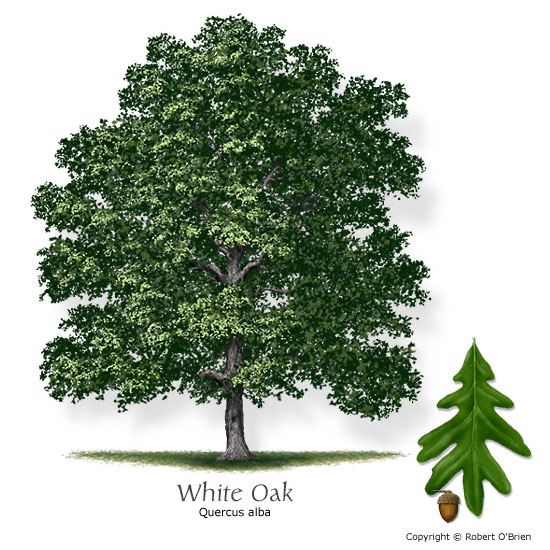Someone recently asked me, “Aren’t all barrels made from American white oak?” My answer was “No,” but the elaboration was probably a bit longer than he expected.
Most of us know that barrels are made out of oak staves. White oak is a part of the genus Quercus from the family of Fagaceae. It is a fascinating wood in that it is water resistant (not water proof) and can be shaped into containers to hold liquids. While all wood has pores, white oak produces seals over those pores called tyloses that make it water resistant. (Red oak barrels, for instance, might work better for dry goods because the open pores in the wood would keep its contents dry and aerated.) Oak trees tend to grow tall and straight, which works well for coopers that need to cut long, clean staves without knots. Different climates affect how tight the grain in oak is, which, in turn, affect how readily spirits move into the wood and extract flavors.
Legally, to make bourbon whiskey in America, charred new oak containers must be used, but there is no species specification for that oak. Different regions of the United States and other countries have different species of white oak. Eastern forests in the U.S grow the most commonly used American white oak, or Quercus alba. Out west grows Quercus garryana, or Oregon oak. In Europe, Qercus patraea, also called French or Hungarian oak, is mainly used for wine production, but is highly prized for whiskey production, as well. In Japan, aging experimentation is being done with Mizunara oak. Quercus mongolica, or Mongolian oak, from far eastern Russia is a wood in high demand for barrel aging. Mongolian oak’s exportation has also become highly regulated due to its popularity. Removing these trees for their prized wood has led to the depletion of a delicate ecosystem, including the rare animal habitats where Siberian tigers and Amur leopards still exist in the wild. Any of these types of oak, once charred, can be used for the production of whiskey. Different countries, of course, have different laws and regulations in place for how the aging process must work. Here in the United States, there is a lot of room to experiment with added staves inside the barrel and different char levels. As long as the barrel is charred and made of oak, the price of the barrel might be your only limit.

